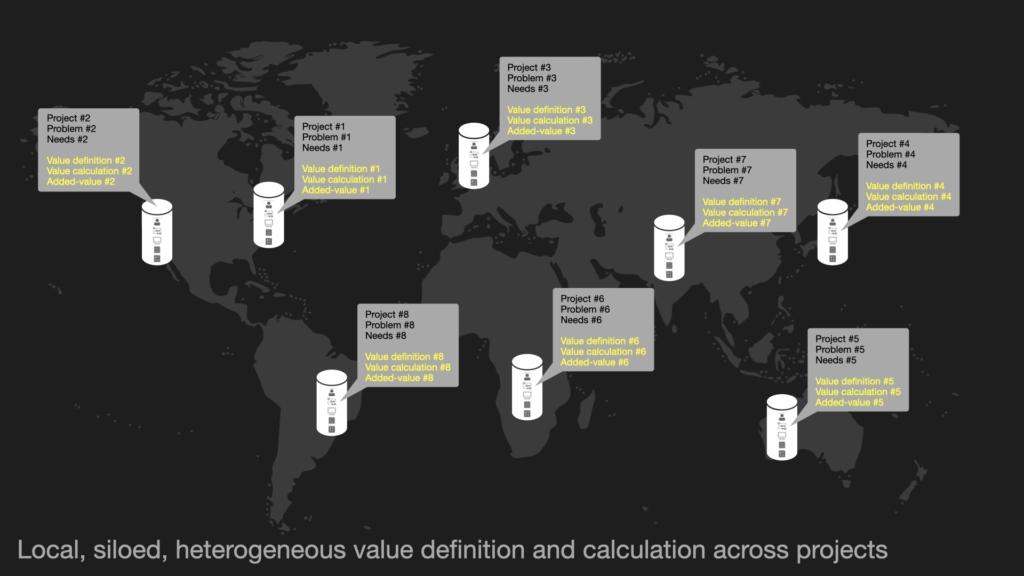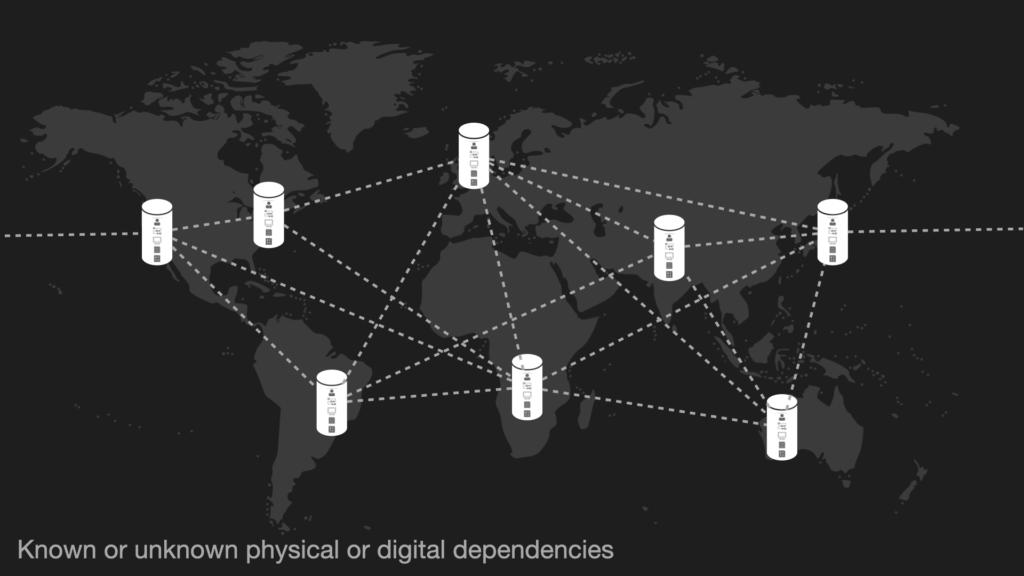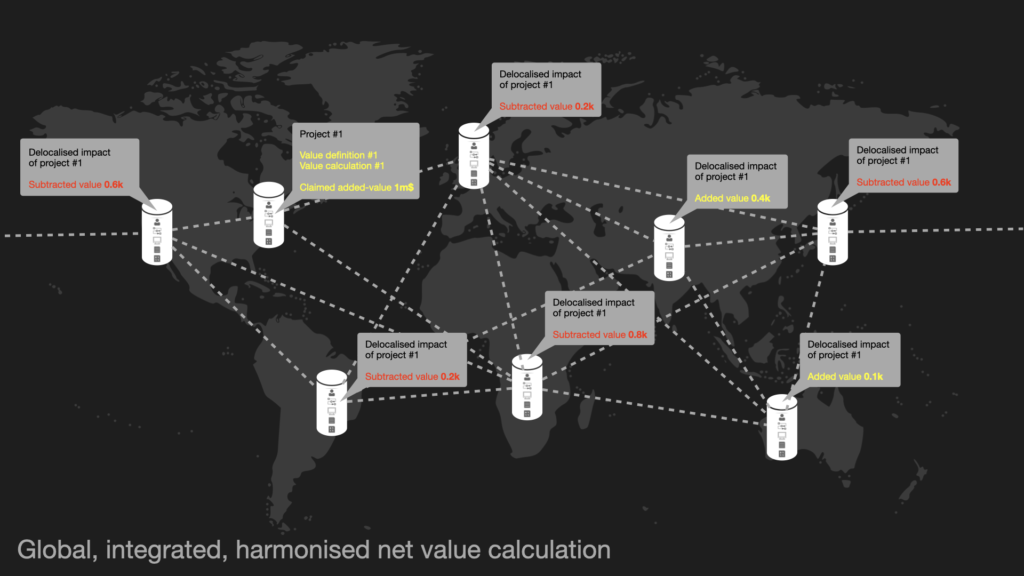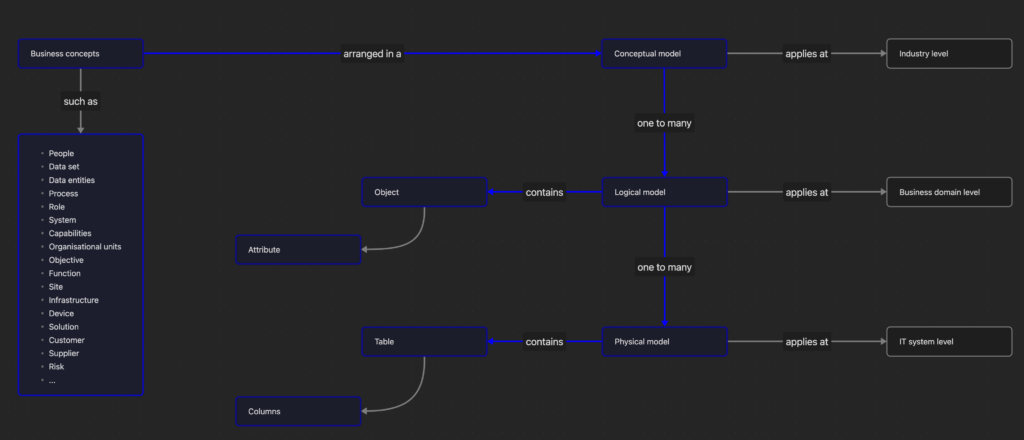Definition
“Context” refers to those objects or entities surrounding a focal thing or event. It is a frame that provides resources for an appropriate interpretation of the thing or event in focus.
Context is key. Without context, nothing is defined.
Context makes sense of what we say or do. In a different context, it would be different.
Especially in a digital ecosystem: “Everything is defined by what it relates to and how it relates to it” (Tim Berners-Lee).
Local vs. global context
Following on the example of business value monitoring, while definition and calculation might make sense in a restricted local scope/context, the known or unknown inter-dependencies render the global net value quite differently.



The 5 Ws and more
These are questions whose answers are considered basic in information gathering for context definition.
Who, What, When, Where, Why that can be completed by How, Which…
Each question should have a factual, open answer (can not be “yes” or “no”).
Context modeling
It has to do with data, information, knowledge models; not to be confounded with machine-learning models. It is a descriptive, declarative representation of things.
Who:
People, education, experience, skills, role (such as experts, customers, suppliers…), responsibilities, interactions…
Where:
Country, city, address, sites but also function, department, division, organizational unit and chart…
When:
Year, month, and day but also relative periods such as milestones as part of a roadmap
What:
By far the biggest category including tangible and intangible (digital) assets such as
- building, plant, facility, lab…
- device, machines, IT hardware infrastructure, vehicles, pieces of land…
- IT software, systems, applications, logic, technical and business capabilities
- structured data sets, data objects, entities (conceptual, logical, physical level) and relationships between them
- unstructured data, documents, corpus, policies, guidelines…
- management concepts such as risks, opportunities, markets, market segments, threats, issues…
How:
Process, activities, tasks, actions…
All these concepts and how they articulate together describe a thing or an event in a professional context
Context of business value delivery
The diagrams shown in the post “business value monitoring“, can be considered as “conceptual models” representing entities required to define and estimate the added-value of any project.

described using

Customer-Supplier context
Each customer has unique needs defined by personal and contextual features:
- Personal features: culture, education, life experience, cognitive abilities,…
- Non-personal features: constraints, laws, given objectives, established processes,…
The combination of features is unique for each customer, hence the need for suppliers to adapt and generate customer satisfaction and retention. Upon digital transformation, this applies particularly to the management of digital products.
Sustainability
Last but not list, in a VUCA* world, being able tpo depict the business context in a precise and reliable manner provides a competitive advantage as its supports
- accurate prescription and prediction
- alternative path enabling resilience to changes
* Volatile, Uncertain, Complex and Ambiguous
